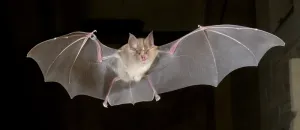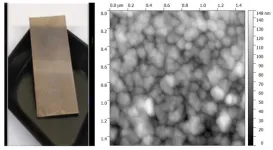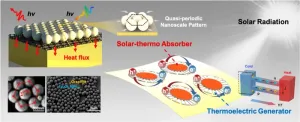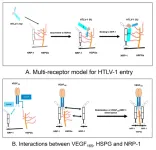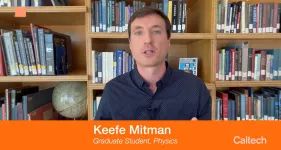The team’s findings, published February 21 in Cell, may also shed light on the unique properties of bats that underlie their remarkable defenses against aging and cancer.
“Our study suggests that bats have evolved mechanisms to tolerate a large load of viral sequences, and they may have a more entwined relationship with viruses than previously thought,” says senior author Thomas Zwaka, MD, PhD, Professor of Cell, Developmental and Regenerative Biology at Icahn Mount Sinai. “This takes on new relevance given the fact that many species of bats have been shown to tolerate and survive viruses that have high mortality rates in humans, including SARS-CoV, SARS-CoV-2, MERS-CoV, and Marburg. The reason could be a modulation of bats’ innate immune response, which renders them asymptomatic and tolerant virus hosts.”
Induced pluripotent stem cells are created by genetically and chemically reprogramming skin or blood cells into newborn stem cells, which have the potential to become any cell in the body.
Until now, no reliable cellular models existed for studying bat biology or their responses to viral infections, thus hindering a deeper understanding of their genomic adaptations. The Mount Sinai team is helping to fill that void by creating induced pluripotent stem cells from the wild greater horseshoe bat (Rhinolophus ferrumequinum), which is the most common asymptomatic carrier of coronaviruses, including viruses closely related to SARS-CoV-2.
“Comparing bat iPSCs to other mammals enabled us to uncover a unique stem cell biology never observed before,” notes co-author Adolfo García-Sastre, PhD, Irene and Dr. Arthur M. Fishberg Professor of Medicine and Director of the Global Health and Emerging Pathogens Institute at Icahn Mount Sinai. “The most extraordinary finding was the presence of large virus-filled vesicles in bat stem cells representing major viral families, including coronaviruses, without compromising the cells’ ability to proliferate and grow. This could suggest a new paradigm for virus tolerance as well as a symbiotic relationship between bats and viruses.”
Researchers believe the bat stem cell model they created will provide an exceptional tool for the scientific community. The first author of the study, Marion Dejosez, PhD, Associate Professor of Cell, Developmental and Regenerative Biology at Icahn Mount Sinai, points out that “pluripotent stem cells have the unique ability to divide indefinitely in culture and turn into immune cells and tissues (like lung or gut epithelium), making them amenable to gene editing and molecular studies.”
This research, in turn, could help answer such important questions as how bats tolerate viral infections and whether they genetically simulate tactics employed by viruses to evade the immune system, thus promoting fertile ground for virus production. An additional question the study helps to answer is whether viruses serve as fully competent agents and editors of host biology in a way that makes them rich sources of evolutionary instructions.
“Future research on bat stem cells will directly impact every aspect of our understanding of bat biology, including bats’ amazing adaptations of flight and ability to locate distant or invisible objects through echolocation, the location of objects reflected by sound, as well as their extreme longevity and unusual immunity,” explains Dr. Zwaka, whose lab at Mount Sinai focuses on fundamental questions around stem cell biology.
The greatest scientific gains, however, are expected to be in the bat virosphere. “Our study establishes a platform to further understand the unique role bats play among mammals as virus reservoirs,” says Dr. García-Sastre. “And that knowledge could provide the field with broad new insights into disease and therapeutics while preparing us for future pandemics.”
This study was funded by the National Institutes of Health, the National Institute of General Medical Sciences, the Eunice Kennedy Shriver National Institute of Child Health and Human Development, and the Huffington Foundation,
About the Icahn School of Medicine at Mount Sinai
The Icahn School of Medicine at Mount Sinai is internationally renowned for its outstanding research, educational, and clinical care programs. It is the sole academic partner for the eight member hospitals* of the Mount Sinai Health System, one of the largest academic health systems in the United States, providing care to a large and diverse patient population.
Ranked No. 14 nationwide in National Institutes of Health funding and in the 99th percentile in research dollars per investigator according to the Association of American Medical Colleges, Icahn Mount Sinai has a talented, productive, and successful faculty. More than 3,000 full-time scientists, educators, and clinicians work within and across 34 academic departments and 44 multidisciplinary institutes, a structure that facilitates tremendous collaboration and synergy. Our emphasis on translational research and therapeutics is evident in such diverse areas as genomics/big data, virology, neuroscience, cardiology, geriatrics, and gastrointestinal and liver diseases.
Icahn Mount Sinai offers highly competitive MD, PhD, and master’s degree programs, with current enrollment of approximately 1,300 students. It has the largest graduate medical education program in the country, with more than 2,600 clinical residents and fellows training throughout the Health System. In addition, more than 535 postdoctoral research fellows are in training within the Health System.
A culture of innovation and discovery permeates every Icahn Mount Sinai program. Mount Sinai’s technology transfer office, one of the largest in the country, partners with faculty and trainees to pursue optimal commercialization of intellectual property to ensure that Mount Sinai discoveries and innovations translate into health care products and services that benefit the public.
Icahn Mount Sinai’s commitment to breakthrough science and clinical care is enhanced by academic affiliations that supplement and complement the School’s programs. Through Mount Sinai Innovation Partners (MSIP), the Health System facilitates the real-world application and commercialization of medical breakthroughs made at Mount Sinai. Additionally, MSIP develops research partnerships with industry leaders such as Merck & Co., AstraZeneca, Novo Nordisk, and others.
The Icahn School of Medicine at Mount Sinai is located in New York City on the border between the Upper East Side and East Harlem, and classroom teaching takes place on a campus facing Central Park. Icahn Mount Sinai’s location offers many opportunities to interact with and care for diverse communities. Learning extends well beyond the borders of our physical campus, to the eight hospitals of the Mount Sinai Health System, our academic affiliates, and globally.
-------------------------------------------------------
* Mount Sinai Health System member hospitals: The Mount Sinai Hospital; Mount Sinai Beth Israel; Mount Sinai Brooklyn; Mount Sinai Morningside; Mount Sinai Queens; Mount Sinai South Nassau; Mount Sinai West; and New York Eye and Ear Infirmary of Mount Sinai.
###
END
